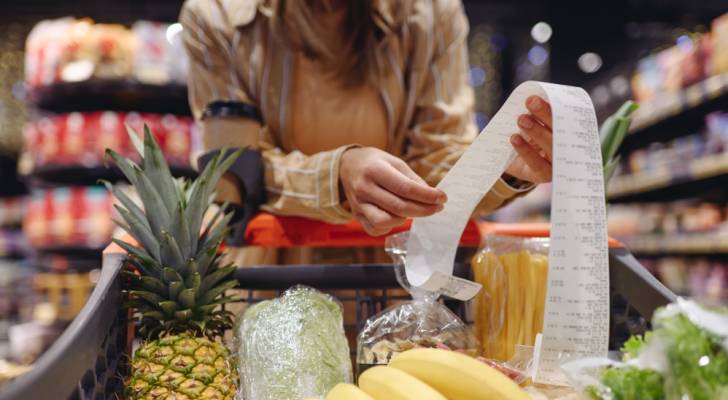
Canada’s inflation rate ticked higher in September, marking the first acceleration in headline inflation since May. The Consumer Price Index (CPI) rose 2.4% year over year, up from 1.9% in August, according to Statistics Canada’s latest report (1).
The jump reflects a slower decline in gasoline and travel prices, alongside renewed upward pressure on groceries. Excluding gas, inflation rose 2.6%, up from 2.4% the previous month — a sign that underlying price pressures remain sticky.
Don’t Miss
- Want to retire with an extra $1.3M? See how Dave Ramsey’s viral 7-step plan helps millions kill debt and build wealth — and how you can too
- The Canadian economy shrank in Q2 2025 — protect your wallet with these 6 essential money moves (most of which you can complete in just minutes)
- Boomers are out of luck: Robert Kiyosaki warns that the ‘biggest crash in history is coming’ — here’s his strategy to get rich before things get worse
Consumers paid 4% more for groceries than they did a year earlier, driven largely by higher prices for fresh vegetables, sugar and confectionery. StatCan noted that food inflation has trended upward since April, with fresh or frozen beef and coffee leading the gains amid tight supply.
Shelter and rent remain major inflation drivers
Shelter costs — the largest component of the CPI basket — continued to climb, up 2.6% year over year, while rent rose 4.8% nationally.
StatCan said faster rent growth in Quebec, particularly in Montréal, was offset by slower increases in British Columbia. Prince Edward Island was the only province to record a decline in rent prices, down 2.2%.
Gasoline prices, meanwhile, fell 4.1% year over year, compared with a 12.7% drop in August. The smaller decline stems from what Statistics Canada calls a “base-year effect” — along with refinery disruptions in the U.S. and Canada that pushed pump prices higher last month.
Read more: Are you drowning in debt? Here are 3 simple strategies to help crush your balance to $0 in no time
Economists say inflation is still within target range
Despite the acceleration, inflation remains within the Bank of Canada’s 1%–3% target range, though it now sits above the midpoint that policymakers typically view as ideal.
“Food prices are volatile in Canada, so I wouldn’t read too much into the one-month change,” said Nathan Janzen, assistant chief economist at RBC, in an interview with CBC News (2). “But food price growth has been sticky, and I don’t know that we can blame it all on tariffs. This has been a persistent phenomenon in recent years.”
RBC economist Abbey Xu said in an emailed statement to Global News that, while inflation has edged up, “most of the increase was driven by temporary factors such as slower gasoline declines and seasonal travel price shifts (3).” Xu added that core inflation — which strips out volatile items — “continues to show gradual improvement,” suggesting inflation pressures are broadly easing.
The September CPI release is the final inflation update before the Bank of Canada’s October 29 interest rate decision. Economists say the data complicates expectations for another rate cut, especially after a stronger-than-expected September jobs report.
Still, most forecasters expect inflation to cool again in the months ahead as energy base effects fade and demand moderates. “If you’re the central bank, you’re not just looking at what inflation is right now — you’re looking at what you think it will be in the future,” Janzen told CBC.
What To Read Next
- Here are 5 expenses that Canadians (almost) always overpay for — and very quickly regret. How many are hurting you?
- Ray Dalio just raised a red flag for Americans who ‘care’ about their money — here’s why Canadians should limit their exposure to U.S. investments
- I’m almost 50 and don’t have enough retirement savings. What should I do? Don’t panic. Here are 6 solid ways you can catch up
- Here are the top 7 habits of ‘quietly wealthy’ Canadians. How many do you follow?
Article sources
We rely only on vetted sources and credible third-party reporting. For details, see our editorial ethics and guidelines.
Statistics Canada (1);CBC News (2); Global News (3)
This article originally appeared on Money.ca under the title: Grocery and rent costs push Canada’s inflation rate up to 2.4% in September
This article provides information only and should not be construed as advice. It is provided without warranty of any kind.